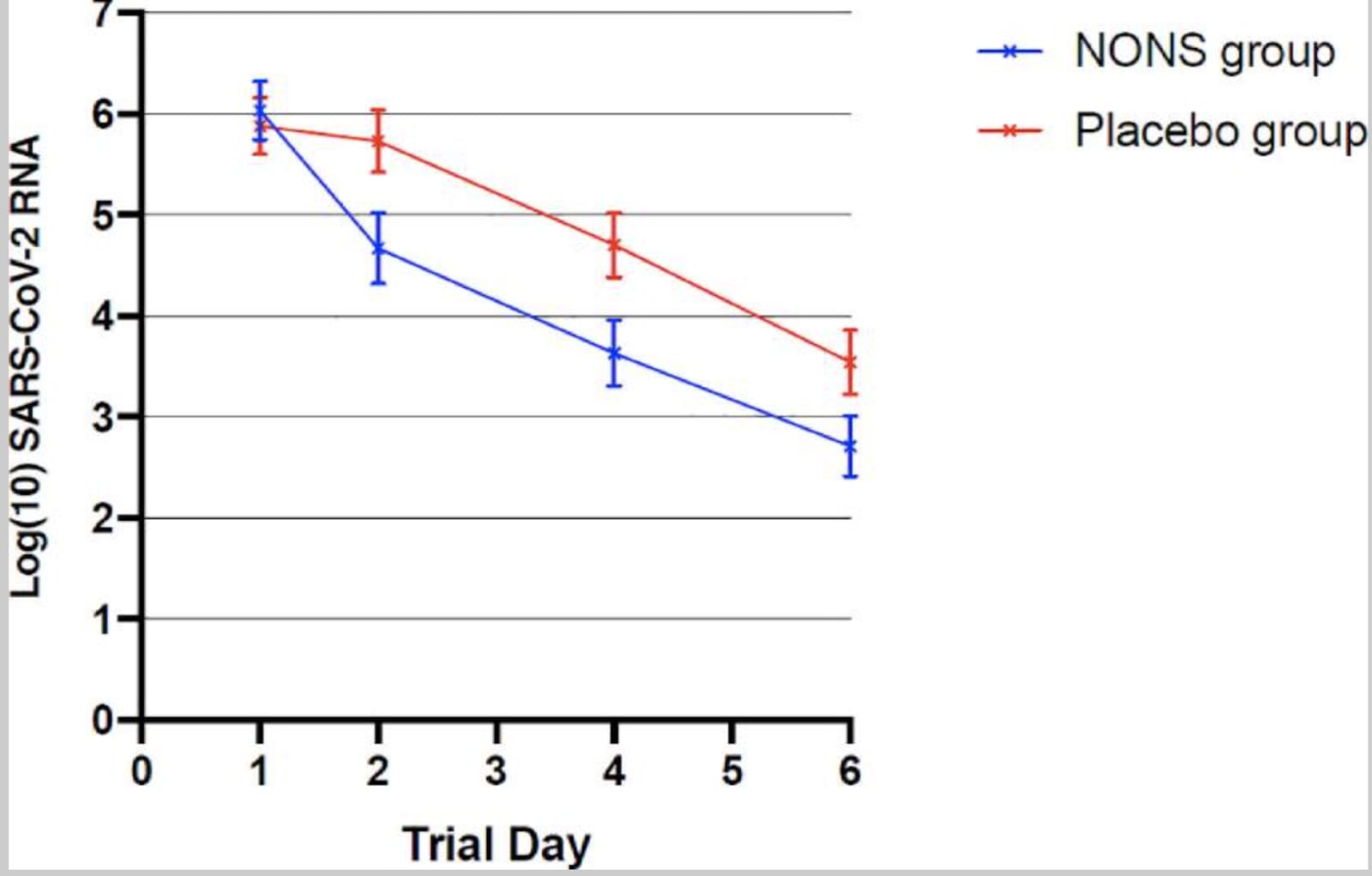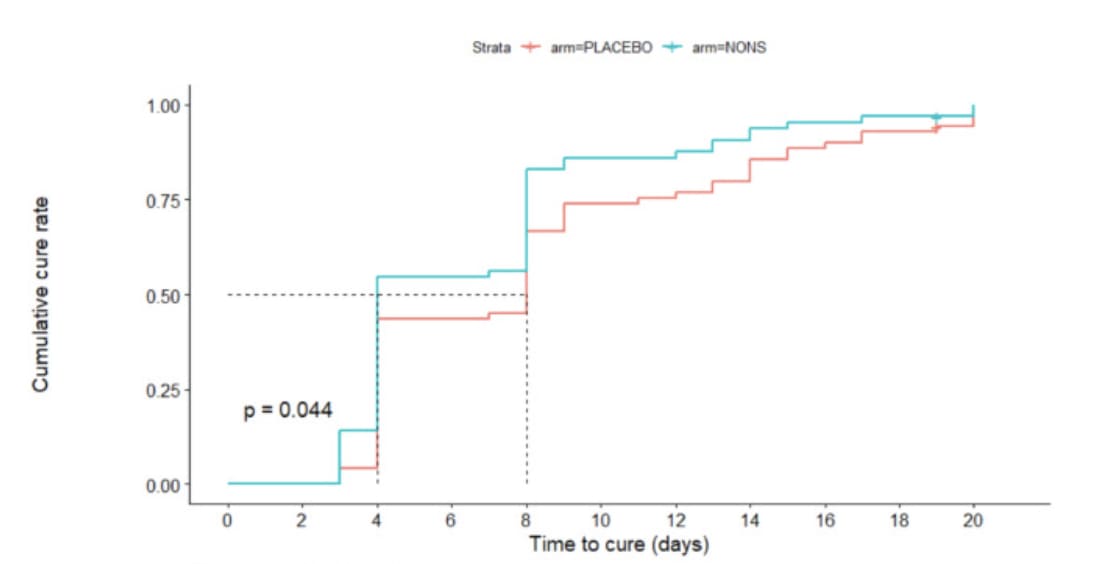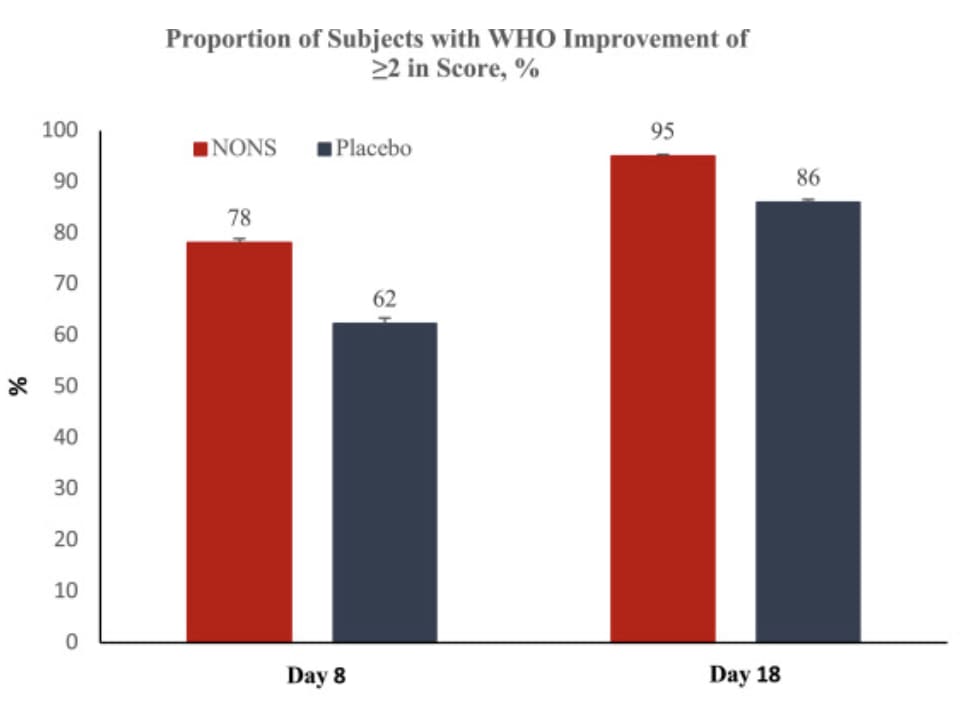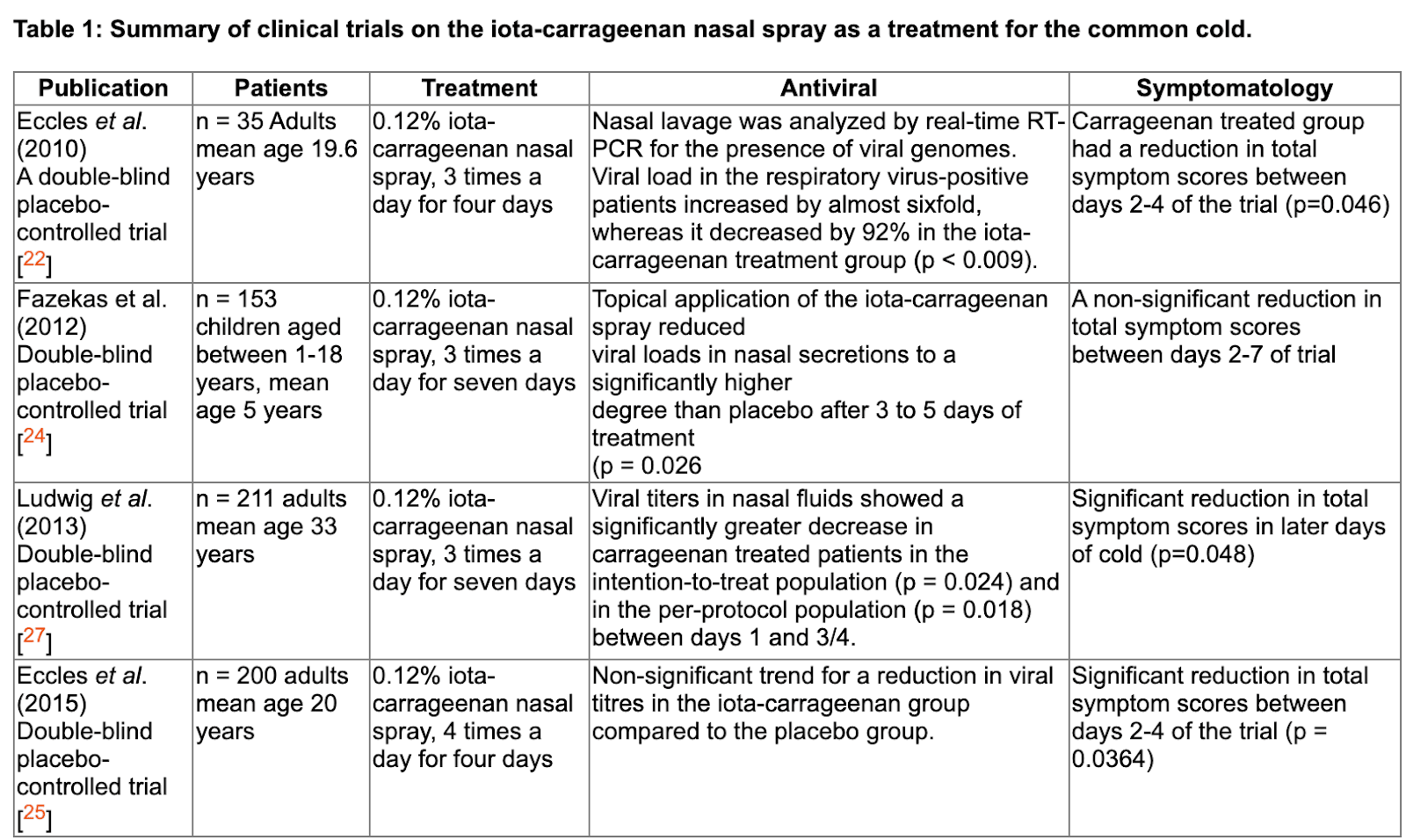Nose / throat treatments for respiratory infections
post by juliawise · 2023-03-13T02:41:37.848Z · LW · GW · 6 commentsContents
Povidone iodine Nitric oxide Products: Nasal washing (neti pot or various other devices) Hydroxypropyl methyl cellulose (HPMC) Carrageenan Xylitol Saline spray / wash Various mouthwashes Alcohol Other stuff being researched but not on the market as far as I know Side effects What about pregnancy? Breastfeeding? Little kids? Nitric oxide Carageenan Iodine Best acronym Personal takeaways None 6 comments
After hearing various people interested in nasal sprays for preventing covid or the common cold, I did a shallow dive on what might be worth trying in this area.
Overall, there are several treatments that seem safe and cheap and some of them are probably effective. A few (carrageenan and HPMC) seem to prevent infection, and the others reduce the severity of an infection once you have it. Some may also reduce your risk of infecting others if you’re already sick.
- Povidone iodine
- Nitric oxide
- Nasal washing (neti pot or various other devices)
- Hydroxypropyl methyl cellulose (HPMC)
- Carrageenan
- Xylitol
- Saline spray / wash
- Various mouthwashes
- Alcohol
- Other stuff being researched but not on the market as far as I know
- Side effects
- Best acronym
- Personal takeaways
Obvious disclaimer: None of this replaces a vaccine or medical care. But it would be awesome if there were fewer colds in my house, if we could all get over them faster, and if we had gotten over covid sooner.
I looked at ingredients you can currently buy (in some country), not stuff that’s not on the market. In some cases you can get them e.g. on Ebay from other countries where they’re available without prescription. I only looked at things with human trials, not things with only in vitro or animal trials.
My understanding is that treatments aimed at the nose and throat can make sense because that’s where upper respiratory infections often first take hold. E.g. covid reproduces in nasal cilia cells for the first 24 hours after exposure before spreading to the rest of the body. A lot of antiviral treatments are known to kill covid in a petri dish, so they might also kill it in your nose and throat.
A lot of the research here is small preliminary studies on covid, often without randomization or control groups. I’m frustrated that in 3 years there haven’t been larger, better studies published – though there are some in the works. I suspect part of this is that the ingredients are cheap and unpatentable, so no one is going to make a lot of money off them. Some of the studies are funded by the companies making the product.
If you’re excited to dig into this more, I would love for you to make this review better!
I would also be excited to see more research on some of these cheap treatments, if anyone reading has the power to make that happen.
Povidone iodine
Povidone iodine has long been used as an antiseptic, and is considered safe to use in the nose and throat.
Study in Bangladesh: 606 people with covid were randomized to use a 1% iodine mouthwash, nose drops, and eye drops vs. water. The ones using iodine were much less likely to test positive at day 7 (3% vs 70%), and were less likely to need oxygen (3% vs 21%) or to die (1% vs 6%). If this is representative of what would happen at a larger scale, it seems like a huge deal and I’m confused why there hasn’t been more study of this. There are a bunch of studies that never finished or never published results – maybe that’s because they didn’t find iodine effective and the researchers didn’t put the time into publishing the null result?
Another study in Bangladesh (189 people): indicates that iodine spray or nasal wash can make you test negative at least temporarily. They took symptomatic people with covid, gave them a nasal spray or nasal wash to use one time, and then collected a second PCR test right away. Some people do test negative after applying the iodine, but this doesn’t seem that relevant to whether you get better sooner. .5% nasal irrigation worked best.
This does make me think it might be good to use something like this if you know you have covid and need to be in a public place e.g. to get medical care. Or before a situation where you’re exposing people a lot, like a dentist visit.
A small (24 person) study found no significant difference in viral load after using povidone iodine mouthwash, gargle, nasal spray, and nasal ointment 4 times a day for 5 days.
Iodine might mess with your thyroid if you use it a lot. From that last study: “Thyroid stimulating hormone elevation (median [IQR], 3.4 [2.6-4.3] mIU/L vs 2.1 [1.4-3.1] mIU/L at baseline) was observed in all patients after 5 days of PI exposure, exceeding the upper normal value in 5 patients, with a return to baseline values 7 to 12 days later.”
Products:
Betadine, Viraldine, Immunemist, various others.
Nitric oxide
Nitric oxide is not the same as nitrous oxide. It’s used in a lot of our body’s processes, and we produce it in response to food including leafy greens. I’m confused about how it’s actually administered — it seems like various things cause your body to make nitric oxide, so the things described as nitric oxide sprays don’t actually contain nitric oxide as an ingredient, but contain stuff that results in more nitric oxide in your body?
A UK study (80 people) found that covid patients using nitric oxide nasal spray (NONS) felt better sooner: “NONS subjects typically reported being better by day 2-4 on treatment, whereas the placebo subjects typically did not report feeling better until after day 5.”
They had lower viral load:
A larger study in India (306 people) found also found that nitric oxide nasal spray (NONS) makes you test negative sooner:
Patients using the spray had faster improvement in symptoms:
It also looks like nitric oxide makes you less likely to give covid to other people:
Apparently you don’t need to start immediately; the UK trial found benefits even though everyone started 4 or more days after symptoms started.
Products:
Various sprays made by Sanotize:
– VirX in Thailand
– Enovid in Indonesia, Israel, and Bahrain.
Nitric oxide is not listed as an ingredient, but my vague understanding is that some of the ingredients cause your body to make nitric oxide? Some studies do specifically mention Sanotize as a manufacturer of nitric oxide spray so I guess this is right. The Sanotize sprays also contain HPMC (see below.)
Nasal washing (neti pot or various other devices)
From a 2022 review of studies on nasal washing (6 using saline, 3 using povidone iodine, and one using an intranasal corticosteroid):
“Among the 10 RCTs, 8 demonstrated that upper respiratory tract symptoms were reduced with nasal irrigation; 3 revealed a reduction in viral load; 4 reported specifically on viral load reduction in the nasopharynx; and 4 reported on side effects, the most common of which was mild nasal irritation. Only a single study reported data on transmission.”
1 small study (79 people, US) showed that people who started nasal washing with either baking soda (sodium bicarbonate) or povidone iodine and sodium chloride right after testing positive with covid resulted in 8x fewer hospitalizations than you’d expect in this population. No control group so I can’t distinguish this from “people who participate in studies are likely to have milder covid cases for other reasons.” No significant difference between the two types of wash – products used were Neilmed or Navage.
Extremely rare: in warm areas, there are occasional cases of fatal brain-eating amoebas from nasal washing. Standard advice is to boil the water first (although given how rare the infection is, it’s not clear that using unboiled water is more dangerous than, say, crossing the street.)
Products
Neilmed, Navage, various others.
You can mix your own with table salt and/or baking soda.
Hydroxypropyl methyl cellulose (HPMC)
HPMC is a polymer approved in the US and EU as a thickening agent in food. If you put it in your nose, it makes a gel that covers nasal receptors and is acidic enough to hinder replication of respiratory viruses. Everything I saw assumes it works for 5 hours.
As far as I can tell, there’s only one published study on humans. This is a cool study design although not randomized: the rabbi encouraged people to use this product while praying at a packed two-day Rosh Hashanah service and for two weeks after. About a third of them did. It was 2020 and transmission was very high in that community, so they had every reason to expect this to be a superspreader event. None of the people using the product regularly got covid, and 10% of those not using it got covid. (But maybe those people were taking fewer precautions in general – not randomized.)
Products:
– In Israel and Europe it’s sold as Taffix or Enovid
– In the UK as Nasaleze (with several variations but it looks like the “allergy” version has the highest proportion of HPMC and worked slightly better in an in vitro trial).
Carrageenan
Known for a long time to be antiviral. It’s made from seaweed and is a common food ingredient. As far as I can tell it’s another one that works partly by forming a physical barrier.
Argentine study of 400 hospital workers exposed to covid patients: it reduced risk of catching covid by about 80%.
A 2021 summary of various trials on the common cold:
Products:
UK: Boots dual defence spray
list of products in various countries
Xylitol
Xylitol is a sugar alcohol commonly used in sugarfree gum. It has antimicrobial properties. In vivo tests on respiratory infections don’t seem that great. One small study (30 people) found that xylitol nasal wash worked better than saline wash for treating sinus infections. Another small (42 person) study of people with nonallergic rhinitis (stuffy nose) found xylitol spray helped them feel better.
Product:
Xlear nasal spray
Saline spray / wash
One small study found saline wash helped people with covid have less nasal symptoms like sneezing and stuffy nose, but didn’t shorten the infection.
In several studies the placebo was saline or wash. Saline is also kinda germicidal, so the effect of the other sprays (compared to no spray) is probably a bit better than it looks in the studies.
I assumed at first that “saline” meant sodium chloride, but some studies seem to also mean things like bicarbonate of soda. Some studies just use a commercial saline wash that doesn’t specify ingredients.
Various mouthwashes
A meta-study on mouthwashes for covid says “hydrogen peroxide, chlorhexidine digluconate, povidone-iodine, cetylpyridinium chloride, β-cyclodextrin-citrox, and sorbitol with xylitol were effective in vivo.” I didn’t look into the details but you can find tem from that metastudy.
Alcohol
Once I started reading about this, I got a lot of ads for nasal alcohol swabs marketed to hospital staff. The research seems to support this for reducing MRSA and other infections in hospitals, but I don’t see research about using it outside that setting.
Other stuff being researched but not on the market as far as I know
Supramolecular filaments – Hopkins
Some mix of stuff including xylitol and a bunch of other things – UK/India
Pentosan polysulfate – RPI / Albany
TMPRSS2 – Cornell / Canada
Side effects
The only significant side effect I saw was possible thyroid effects from iodine. The most common side efect listed was “unpleasant nasal tingling” or the weird feeling of having fluid in your nose. “Nose too clean” is a real complaint listed in a study. But in general it seemed like people didn’t mind these products.
None of these studies were on long-term use. It’s common that people using nasal decongestant sprays for more than a few days get rebound congestion – their congestion comes back worse when they don’t use the spray. I’m not sure if the same thing could happen with these. Or it could mess up your nose in some other way, which would be bad because your nose is supposed to filter out germs and other stuff.
What about pregnancy? Breastfeeding? Little kids?
Nitric oxide
Nitric oxide is sometimes used for pregnant or pediatric patients with respiratory distress (because it’s a vasodilator and improves oxygenation). But when someone is already having trouble breathing, that’s a very different cost/benefit situation than what I’m talking about here.
There’s some evidence that nitric oxide in first trimester is related to birth defects.
Carageenan
Carageenan is already in a lot of baby formulas, and has been “generally recognized as safe” in the US since the 1959. But maybe spraying it in your nose is different.
One study on carageenan nasal spray in children 1-18 with the common cold just says it’s “safe and well tolerated” and caused fewer side effects than the saline placebo. It also seemed to help kids feel better sooner, and reduce their viral load. The Betadyne spray is the same as the adult one but with a smaller sprayer?
Iodine
Pediatric use of iodine: generally considered safe as an antiseptic, but no data on using it as a nasal spray repeatedly.
Iodine is usually recommended against during pregnancy (except maybe late pregnancy?) because of possible effects on the baby’s thyroid.
Best acronym
The Sino-Nasal Outcome Test 20 is abbreviated “SNOT-20.”
Personal takeaways
I have bought a couple of these products and will probably use some of them:
– a spray with carrageenan or HPMC occasionally to reduce chances of catching covid at high-risk events
– carrageenan spray during the early part of a cold
– nasal washing and gargling with iodine during covid. Nasal washing seems like more of a hassle then a spray, but probably works better.
6 comments
Comments sorted by top scores.
comment by Nissa Seru (nissa-seru) · 2023-03-14T01:25:41.545Z · LW(p) · GW(p)
some potential cilotoxicity for povidone iodine at high concentrations
https://pubmed.ncbi.nlm.nih.gov/25363372/
ok- looking ranges: https://pubmed.ncbi.nlm.nih.gov/32520599/
looks effective above 0.5%. i mix for 0.75% to keep a bit of tolerance for mixing error while staying below 1% for nasal use.
if you are diluting an otc product to get desired concentrations, check for toxicity of additives esp if the product is marketed for external use only.
Replies from: juliawise, nissa-seru↑ comment by Nissa Seru (nissa-seru) · 2023-03-14T01:32:01.562Z · LW(p) · GW(p)
low concentration pi solution is not very stable iirc. store away from sunlight. use glass, not plastic for storage
comment by Sameerishere · 2023-03-30T04:32:59.154Z · LW(p) · GW(p)
You cite studies indicating that iodine spray (of which Betadine is one brand) can make you test negative "at least temporarily," and say, "Some people do test negative after applying the iodine, but this doesn’t seem that relevant to whether you get better sooner."
Any thoughts on whether this poses the risk that the spray could temporarily suppress the virus but leave you still infectious a few hours later? (I'm worried about this in the context of testing myself to see if I'm ready to exit isolation.)
I do seem to recall that Roche Pilot rapid antigen tests caution to avoid testing for at least half an hour after using any nasal spray, whereas Flowflex tests have no such guidance and in fact indicate no interactions with iodine. I don't know what to make of this.
comment by Andrew Currall (andrew-currall) · 2023-03-22T10:59:59.585Z · LW(p) · GW(p)
Nice write-up.
I'd also be interested in discussion of treatments that are only meant to relieve symptoms rather than reduce the risk of infection, for example expectorants (e.g. guaifenesin), antihistamines, and decongestants (e.g. phenylephrine).
Replies from: Sameerishere↑ comment by Sameerishere · 2023-03-30T04:36:19.584Z · LW(p) · GW(p)
FWIW, I haven't consulted the literature on this, but if you're interested, I noted my personal experience with some of these treatments here. [LW · GW]
Judging from my PCP's positive reaction to my sharing I was using these approaches and my subjective experience with them, they are safe and effective. (My PCP also suggested phenylephrine, which is the more readily available but weaker variant of Sudafed, to alleviate nasal congestion, but after the steaming I didn't feel a need for it.)




